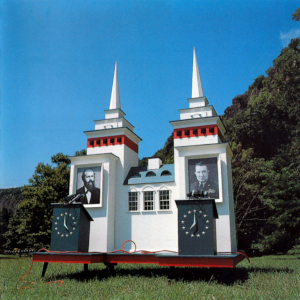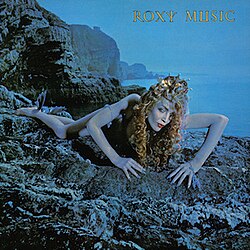Like 90% of compelling songwriting is creating tension and then releasing it. A chorus explodes after coming out of a bridge. A DJ annihilates a dance floor with a massive drop. A jazz ensemble instantly lock together for a song’s head after a trading solos. You can think about a song like a rubber band. It’s a vessel for potential energy. You don’t want to release it too early or it’ll flub out, but you don’t want to draw out the tension too far or it’ll break.
Earlier this week, I was working with a busy chord progression – all power chords, very punk rock – and I hit an impasse. The verse and chorus felt good, but I didn’t really know where to take the song next. I tried layering on more chords, but the energy was gone, the tension had dissipated.
One of the biggest tricks for generating tension is dynamism. If you’re playing loud, try playing soft. If you’re playing fast, try playing slow. If you’re playing a shit-load of chords, why not try playing two…or even, why not, one.
I laid on one chord for thirty-two measures. It was the most exciting part of the song yet. When I slammed back into the verse riff, it was like the Red Sea had parted.
There’s something elemental, Neanderthal, about bashing out a single chord on a guitar, something that gets to the appeal of the instrument more than the fancy finger acrobatics of our busiest players. There’s something beautifully bestial about a dumbly strummed guitar.
Before we get to this week’s albums, let’s segue into a sexual metaphor.
A lead guitar is like the weird, porn-y thing you do that makes a sexual experience memorable. It’s the toe sucking, the public nudity, the unmentionable thing done with a piece of fruit or a remote control. It sticks in the brain after the sensations of the experience have faded. Most likely, your wildest moments have involved lead guitar.
But the rhythm guitar is the one that makes you nut.
Coming doesn’t, ahem, come about by doing the most outlandish shit possible. It’s about sustained rhythm with a gradually increasing intensity. It’s about stroking pleasure centers until the conclusion becomes inevitable. It’s about relentless pounding, subtle variation, timing, feel, and groove. It’s all about that strum.
Here’s a list of albums where the rhythm guitar will get you off.
1969: THE VELVET UNDERGROUND LIVE WITH LOU REED:
Lou Reed loves rhythm guitar so much that he had the Velvet’s drummer, Maureen Tucker, forgo cymbals because “cymbals eat guitars.” In all the sonic space where you would usually hear hi-hats and crashes, Reed and Morrison give a clinic on rhythm guitar. Technically, both players swap between lead and rhythm, but their playing is so intertwined that you can’t differentiate who’s playing what. The eight minutes of “What Goes On” is a masterclass on strumming.
THE FEELIES’ CRAZY RHYTHMS:
This week’s Life of the Record podcast about the creation of The Feelies’ Crazy Rhythms inspired this week’s column. The Feelies adopted Reed’s take on cymbals, but filled in the extra sonic real estate with percussion – wood blocks, claves, shakers, timbales, castanets, pipes, bells, and even sandpaper mutated with oceans of reverb. However that doesn’t mean they shied away from guitar. Glen Mercer and Bill Milton layered on electrics, acoustics, twelve strings, and bowed guitars to create a thoroughly textured album that’s foremost concern is running down the beat.
THE WHO’S LIVE AT LEEDS:
In 1980, Annie Leibovitz snapped a picture of Pete Townshend resting his head against his strumming hand. Although most would be transfixed with the blood running down his bandaged fingers, I was impressed by the length of them. Where Led Zeppelin, Cream, and the Jimi Hendrix Experience – all one-guitar bands – relied on the flash and speed of lead guitar to define their sound, the Who made as massive a sound with someone who played traditionally rhythm parts, probably made easier because was playing those parts with a fucking catcher’s mitt.
The Who’s music is somewhat slept on these days, even though they were huge (commercially and sonically), pioneered the use of synthesizers in rock, and were a ferocious live band. That last part is captured here, highlighted by Townshend windmill strumming barre chords on the extended “My Generation” medley.
BO DIDDLEY (1958):
Dunta, dunta, dunta, dun-dun is a cousin to the hambone, “shave and a haircut,” and the son clave, but in rock and roll, we call it the Bo Diddley beat.
How many guitar chords do you need to make a rock song? The same number of Bo Diddleys needed to change a lightbulb. One. As long as you keep that beat going, you don’t need to know another note.
In addition to popularizing one of the most powerful rhythmic phrases of all time, Diddley, an inveterate tinkerer, invented a variety of guitar effects devices, including an intense tremolo that he used to give his music even more rhythmic movement.
SONIC YOUTH’S DAYDREAM NATION:
Hey, I did it. I got the Velvet Underground and Sonic Youth in the same column.
Thurston Moore was known for playing the chucka-chucka parts, and Lee Ranaldo the more streamlined leads, but let’s not mince words, they were both primarily rhythm players. One went high and one went low, but both played in service of the squalling, skronking, alt-rock monster that was Sonic Youth. Listen to “Teenage Riot,” “Silver Rocket,” or “Trilogy” to hear the majesty of rhythm guitars stacked on top of each other.
Naturally, this list could be twenty albums long (I didn’t mention the Stones, Talking Heads, James Brown, Gang of Four, Isaac Hayes, Chuck Berry, The Strokes, or a dozen other rhythmically minded aces), but it’s a good place to start when you’re thinking about getting off.








Comments